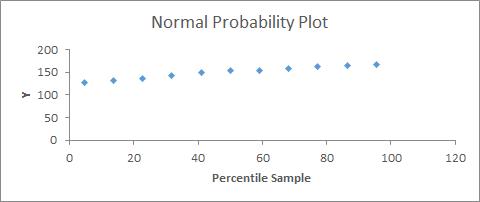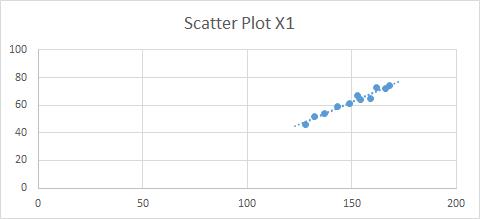OBJECTIVE
Verify whether two
groups are significantly different.
DESCRIPTION
There are three main
applications of the t-test:
- -
One-sample
t-test: compare a sample mean with the mean of its population;
- -
Two-sample
t-test: compare two sample means;
- -
Paired
t-test: compare two means of the same sample in different situations (i.e.
before and after a treatment).
To perform a t-test, it
is necessary to check the normality assumption (see 36.INTRODUCTION TO REGRESSIONS); however, the t-test tolerates deviations
from normality as long as the sample size is large and the two samples have a
similar number of elements. In the case of important normality deviations, we can
either transform the data or use a non-parametric test (see Figure
40 in chapter 41.INTRODUCTION TO HYPOTHESIS TESTING).
An alternative to the
t-test is the z-test; however, besides the normality assumption, it needs a
larger sample size (usually > 30) and the standard deviation of the
population.
Each of the three
kinds of t-tests described above has two variations depending on the kind of
hypothesis to be tested. If the alternative hypothesis is that the two means
are different, then a two-tailed test is necessary. If the hypothesis is that one
mean is higher or lower than the other one, then a one-tailed test is required.
It is also possible to specify in the hypothesis that the difference will be
larger than a certain number (in two-sample and paired t-tests).
After performing the
test, we can reject the null hypothesis (there are no differences) if the
p-value is lower than the alpha (α) chosen (usually 0.05) and if the t-stat value
is not between the negative and the positive t-critical value (see the
template). The critical value of t for a two-tailed test (t-critical two-tail)
is used to calculate the confidence interval that will be at the 1 minus the α
chosen (if we choose 0.05 we will have a 95% confidence interval).
ONE-SAMPLE T-TEST
With this test we compare a sample mean with
the mean of the population. For example, we have a shampoo factory and we know
that each bottle has to be filled with 300 ml of shampoo. To control the
quality of the final product, we take random samples from the production line
and measure the amount of shampoo.
Figure
43:
Input Data of a One-Sample t-Test
Since we want to stop
and fix the production line if the amount of shampoo is smaller or larger than
the expected quantity (300 ml), we have to run a two-tailed test. Figure
43 shows the input data as well as the calculated
standard deviation and sample mean, which is 295. A confidence level of 0.05 is
chosen. We then calculate the t-critical value and p-value (the formulas can be
checked in the template).
Figure 44:
Results of a One-Sample t-Test
Since the p-value is
lower than the alpha (0.05), we conclude that the difference in the means is
significant and that we should fix our production line. The results also include
the confidence interval of 95%, which means that we are 95% confident that the bottles
are filled with a minimum of 292 ml and a maximum of 298 ml.
TWO-SAMPLE T-TEST
A practical example would be to determine whether
male clients buy more or less than female ones.
First of all, we
should define our hypothesis. In our example our hypothesis is that male and
female clients do not buy the same amount of goods, so we should use a
two-tailed test; that is, we do not infer that one group buys more than the
other one. On the other hand, if we would like to test whether males buy more,
in this case we would use a one-tailed test.
In the Excel
complement “Data Analysis,” we choose the option “t-Test: Two-Sample Assuming
Unequal Variances” by default, since, even if the variances are equal, the
results will not be different, but if we assume equal variances, than we will
have a problem in the results if finally the variances are not equal. We select
the two-sample data and specify our confidence level (alpha, by default 0.05).
Figure 45: Output
of a Two-Sample t-test Assuming Unequal Variances
Since we are testing
the difference, either positive or negative, in the output, we have to use the
two-tailed p-value and two-tailed t-critical value. In this example the
difference is significant, since the p-value is smaller than the chosen alpha
(0.05).
Confidence intervals
are also calculated in the template, concluding that we are 95% confident that women
buy between 8 and 37 more products than men.
PAIRED T-TEST
We want to test two different products on
several potential consumers to decide which one is better by asking participants
to try each one and rate them on a scale from 1 to 10. Since we have decided to
use the same group to test both products, we are going to run a paired two-tailed
t-test. The alpha chosen is 0.05.
Figure 46:
Output of a Paired t-Test
The results of the
example show that there is no significant difference in the rating of the two
products, since the p-value (two-tail) is larger than the alpha (0.05). The
template also contains the confidence
interval of the mean difference, which in this case includes 0 since there is
no significant difference.
TEMPLATE















